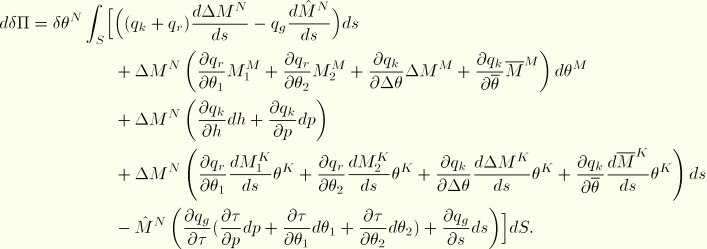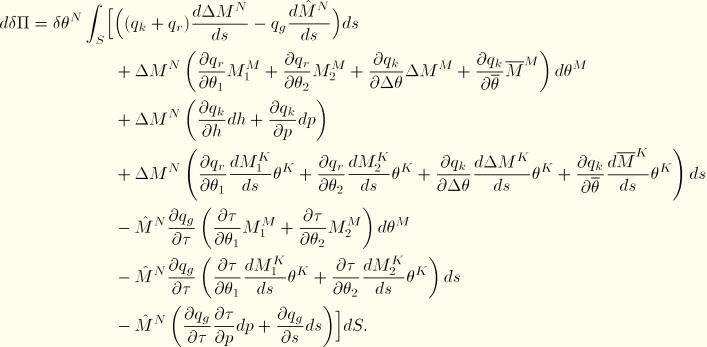
Products: ABAQUS/Standard ABAQUS/Explicit
For coupled temperature-displacement analysis in ABAQUS/Standard the user can introduce a factor, ![]() , which defines the fraction of frictional work converted to heat. The fraction of generated heat into the first and second surface,
, which defines the fraction of frictional work converted to heat. The fraction of generated heat into the first and second surface, ![]() and
and ![]() , respectively, can also be defined. This heat generation capability is to be used only in a coupled temperature-displacement analysis.
, respectively, can also be defined. This heat generation capability is to be used only in a coupled temperature-displacement analysis.
The heat fraction, ![]() , determines the fraction of the energy dissipated during frictional slip that enters the contacting bodies as heat. Heat is instantaneously conducted into each of the contacting bodies depending on the values of
, determines the fraction of the energy dissipated during frictional slip that enters the contacting bodies as heat. Heat is instantaneously conducted into each of the contacting bodies depending on the values of ![]() and
and ![]() . The contact interface is assumed to have no heat capacity and may have properties for the exchange of heat by conduction and radiation.
. The contact interface is assumed to have no heat capacity and may have properties for the exchange of heat by conduction and radiation.
Refer to “Small-sliding interaction between bodies,” Section 5.1.1, and “Finite-sliding interaction between deformable bodies,” Section 5.1.2, for explanations of the notation used for the shape functions and contact parameters involved in the small-sliding and slide line theory. Note that the shape functions for interpolation of the temperature field may be different from the interpolation functions for the displacements; for example, if the underlying elements are of second order, the displacements are interpolated using quadratic functions, whereas the temperature field is interpolated using linear shape functions. Hence, the temperature interpolator will be denoted with the symbol ![]() and the displacement interpolation will be denoted with the symbol
and the displacement interpolation will be denoted with the symbol ![]() . Only the heat transfer terms will be discussed in the following.
. Only the heat transfer terms will be discussed in the following.
The heat flux densities—![]() , going out the surface on side 1, and
, going out the surface on side 1, and ![]() , going out the surface on side 2—are given by
, going out the surface on side 2—are given by
![]()
![]()
The heat flux density generated by the interface element due to frictional heat generation is given by
![]()
The heat flux due to conduction is assumed to be of the form
![]()
The heat flux due to radiation is assumed to be of the form
![]()
Using the Galerkin method the weak form of the equations can be written as
![]()
![]()
At a contact point the temperatures can be interpolated with
![]()
![]()



![]()
![]()
![]()
![]()
For contact pairs and slide line elements, each integration point is associated with a unique slave node. If we associate ![]() with the slave surface, then
with the slave surface, then ![]() will again have only a single nonzero entry equal to one and the derivatives of
will again have only a single nonzero entry equal to one and the derivatives of ![]() with respect to
with respect to ![]() vanish. In contrast, on the master surface there will be multiple nonzero entries in
vanish. In contrast, on the master surface there will be multiple nonzero entries in ![]() , which are a function of the position on the master surface at which contact occurs.
, which are a function of the position on the master surface at which contact occurs.
For GAPUNIT and DGAP elements each contact (integration point) is directly associated with a node pair. Hence, ![]() and
and ![]() each have one nonzero entry that is equal to one, and all terms involving derivatives of
each have one nonzero entry that is equal to one, and all terms involving derivatives of ![]() and
and ![]() with respect to
with respect to ![]() vanish.
vanish.
The variations of overclosure, ![]() , and slip,
, and slip, ![]() , can be written as linear functions of the variations of displacement. These expressions, which determine the form of the
, can be written as linear functions of the variations of displacement. These expressions, which determine the form of the ![]() matrix for contact elements, have been derived in “Small-sliding interaction between bodies,” Section 5.1.1, and “Finite-sliding interaction between deformable bodies,” Section 5.1.2.
matrix for contact elements, have been derived in “Small-sliding interaction between bodies,” Section 5.1.1, and “Finite-sliding interaction between deformable bodies,” Section 5.1.2.